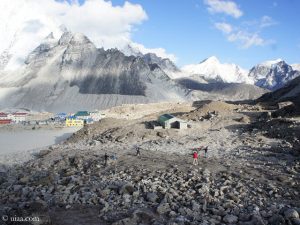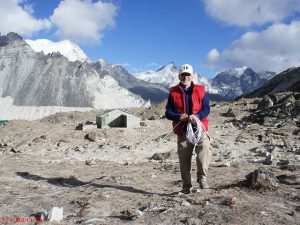Biogas from Everest faeces
There are things that stink to high heaven – quite literally. For example, if up to 1000 climbers, high altitude porters, cooks, kitchen helpers and other staff relieve themselves for two months during the spring season in the base camp on the Nepalese south side of Mount Everest. The number of 12,000 kilograms of faeces has been reported for years, which seems to me rather low. The removal of the human waste from Everest Base Camp has been regulated for a long time, in contrast to the faecal problem in the high camps. The excrements from the toilet tents of the expeditions are collected in barrels and carried downwards by so-called “shit porters” – until 2014 without exception to Gorak Shep, the next small settlement, located about five kilometers from the base camp, now also further down the valley. There the faeces have been tipped into pits thus posing a great danger to the drinking water. The International Climbing and Moutaineering Association (UIAA) has now awarded an environmental protection project which could make an important contribution to tackling the problem.
Groundbreaking scheduled for spring 2018
The “Mountain Protection Award 2017” of the UIAA goes to the “Mount Everest Biogas Project”. Two Americans, the expedition manager Dan Mazur and Garry Porter, a former engineer of the aviation group Boeing, had founded the project in 2010. In Gorak Shep the faeces from Everest are to be collected in dense containers and used for a biogas digester. The technical challenge is to maintain the required temperature for the digester at the partial extreme cold at an altitude of 5,200 meters. This problem appears to have been solved. “Our engineering and architectural design is sound and we have high confidence in it,” says project manager Garry Porter. “It is now time to put theory to test.” The groundbreaking is scheduled for next spring – if the fundraising is successful by then. In this case the plant in Gorak Shep will probably be completed in winter 2018/19, and the lodge owners could cook with biogas instead of wood or Yak dung.
Faeces problem not only on Everest
Further customers of the technology should also be found in other areas of the Himalayas and the Karakoram. So the base camp at the foot of the eight-thousander Manaslu had Everest proportions this fall. The faecal barrels might have been full there too – if the human waste has been carried away at all.









